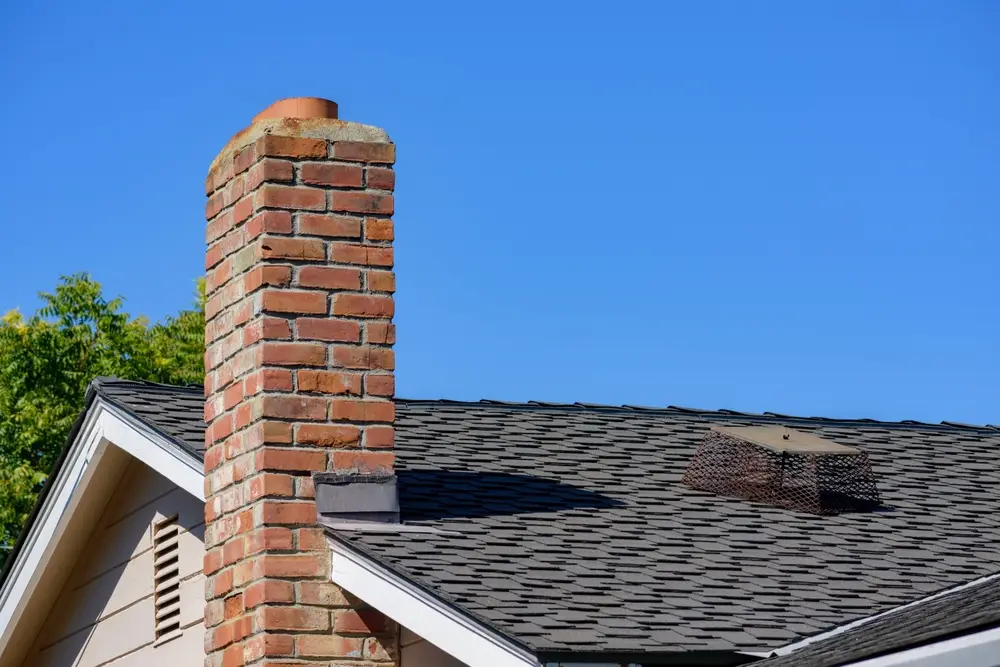The Stack Effect is a hidden, often overlooked, but strong contributor to home energy loss. As a homeowner, finding new ways to keep your home efficient and lower your energy bills is an ongoing challenge. One of the most effective ways to achieve this is by understanding the concept of Stack Effect and its impact on home energy efficiency. By identifying where your home may be experiencing the affects of it, you can take action to minimize the risks and save on your energy costs.
In this blog, we will discuss what exactly the Stack Effect is, the negative affects it can have on your home, and how HomeWorks can help with our Mass Save assessments and insulation services.

What Is the Stack Effect?
The Stack Effect, also known as the Chimney Effect, refers to the movement of air inside a building or a home that is not properly sealed or is inadequately insulated. Air has weight and it moves around freely, coming and going according to pressure imbalances. The hotter the air is, the farther the molecules are from each other, which means it’s less dense. As the air cools, the molecules move closer together, making the air denser and increasing the pressure.
This is why warm air (lighter) rises and cold air sinks (heavier).
How Does the Stack Effect Affect the Temperature & Efficiency of a Home?
In the winter, warm air rises and can leak out of your home through gaps in places like your attic. When that air leaves your home, the pressure at the bottom of the home decreases. To fix the pressure imbalance, colder air is drawn inside at the base of your home (like the basement).
This is why it’s called the Stack Effect. The colder and denser air “stacks” upward, filling the house as it pushes lighter and warmer air out of the home.
During the summer, this reverses and cold air produced by your cooling system sinks and escapes through vulnerable areas lower in your home. This pressure imbalance sucks hot air down from the attic into your living spaces, making your home hot.
Services We Provide in Massachusetts
What Happens If Your Home Is Not Properly Sealed?
When your home is not properly sealed, air can move about freely, which can trigger a variety of negative consequences for you and your home. The Stack Effect worsens with the increase in gaps, cracks, and holes in your home, providing more places for air to come and go, whether that’s the attic or basement, or even your windows.
The Stack Effect can:
- strain your heating and cooling equipment, increasing maintenance costs and decreasing system lifespan
- decrease home comfort as your HVAC system struggles to keep up, creating inconsistent temperatures
- increase moisture in your home and invite outdoor air pollutants inside, which contributes to mold growth and structural damage, and can also affect your health
- increase year-round energy usage which makes your energy costs higher than they should be
How Can You Lower the Impact of the Stack Effect & Keep Home Comfortable Year-Round?
Controlling air movement throughout your home (limiting the Stack Effect) can save you energy and money. Air sealing and insulation upgrades are the best way to keep your conditioned air where you want it – inside your home!
Air sealing and insulation not only work all year long, but they work better together, giving your home the most protection. We call insulation your home’s winter sweater and air sealing its windbreaker, providing a complete seal when worn together.

Are There Discounts from Mass Save to Fix the Stack Effect in Homes?
The good news is that if you’re a Massachusetts homeowner or renter, you can access offers like 100% off air sealing and 75-100% off insulation to make these improvements affordable.
To access the rebates exclusive to MA residents, all you have to do is sign up for a no-cost Mass Save® Home Energy Assessment here. The Mass Save program is funded through a charge on your monthly energy bill so there is no additional cost for the assessment.
During a Mass Save Home Energy Assessment, a certified Home Energy Specialist comes to your home and assesses its energy efficiency, looking at things like your heating and cooling systems, lighting, air sealing, insulation, and even safety concerns. At the end of your assessment, you get a custom home energy report and your specialist can help show you which benefits you qualify for and how to access incentives like 0% financing and no-cost items like programmable thermostats and water-saving showerheads.
Schedule a Mass Save Home Energy Assessment to Improve the Insulation & Air Sealing of Your Home in Massachusetts with HomeWorks
At HomeWorks Energy, it’s our mission to educate our neighbors about the benefits of energy efficiency and show them how to access energy savings through the Mass Save program. We’re proud to be a Mass Save partner and we’re happy to help our customers reduce energy costs.
Sign up for an assessment now and get big incentives for air sealing and insulation!











